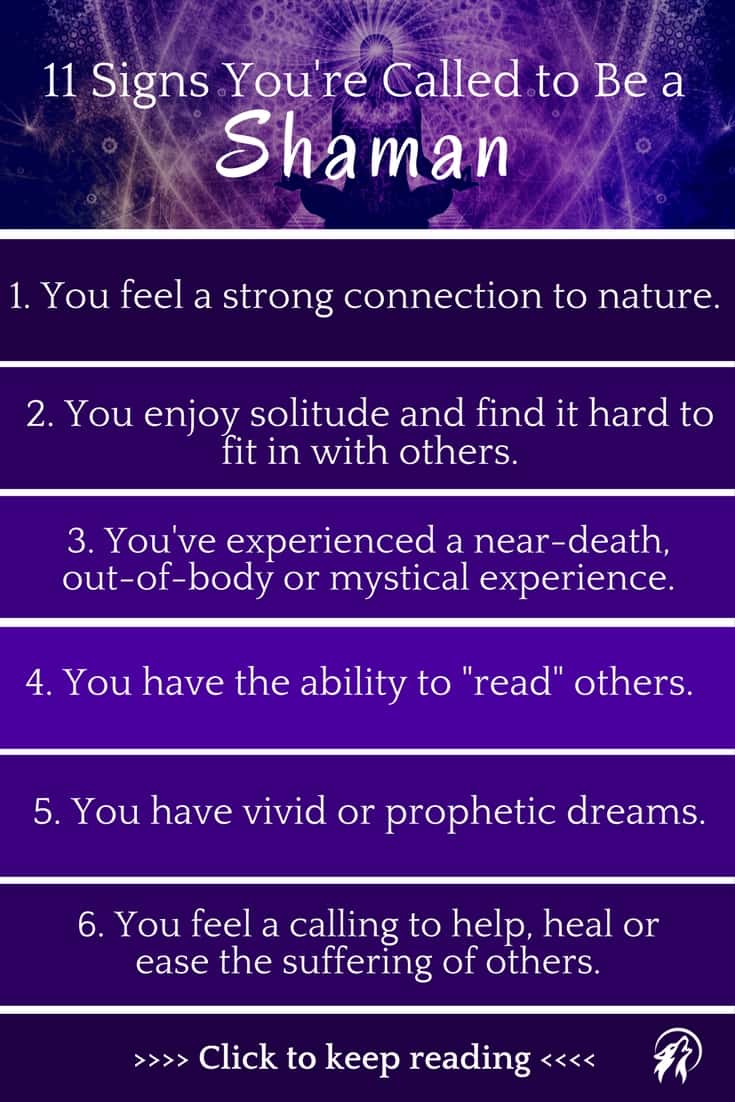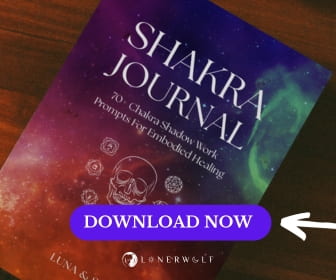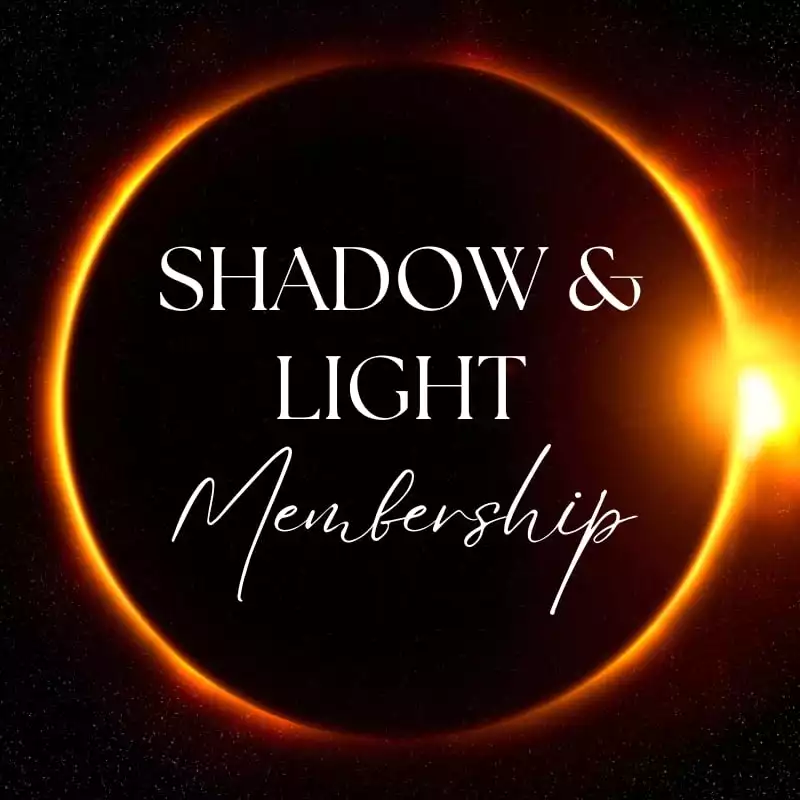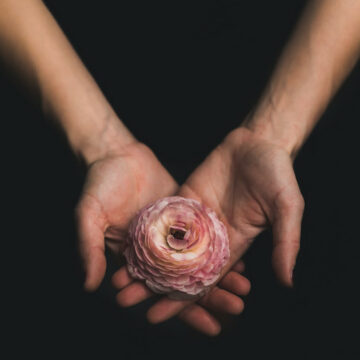It was late into the night that I drank a mixture of what appeared to be pulverized herbs.
The haunting sounds of a song suddenly appeared around me, intensifying my feelings of being utterly lost in an alien universe. The sounds that kept drawing me in, had a pleading quality that made me want to weep with sorrow.
As I started singing, I realized my song was inviting the spirit of the herb to move into my body. I wanted it to stop, to be over but in that moment I knew it was too late, I had left this reality.
I was canoeing through the infinite stream of the unconscious mind, and the song was my solitary paddle. It was up to me to avoid the rapids and control the currents by making the song more beautiful, by begging the Spirit of the herb to guide and heal me.
This was my initiation into shamanism. But before this experience, I had to first understand and identify the signs of my shamanic calling.
What is a Shaman?
At its most basic level, shamanism can be understood as a collection of ancient techniques that help to awaken and expand consciousness, as well as heal humanity’s inner wounds.
Shamanic practice is the earliest known form of religion that our ancestors experienced. The different number of spiritual techniques used to expand our conscious and provoke mystical experiences was astonishing. These techniques ranged from chanting, fasting, and nature immersion, to incessant trance dancing and ingesting hallucinogenic plants.
Unlike most religions where the main concern is finding answers, the Shaman is more interested in provoking you to ask the right questions that will lead you to experience truth. The Shaman doesn’t pursue meaning: he or she creates it by bringing the sacred to an otherwise mundane reality.
The word “Shaman” first originated in Siberia as the word “samarambi” meaning “to excite oneself,” and “sam-dambi” meaning to dance. The shaman, therefore, excites himself into a divine frenzy or ecstasy through drum beating and dancing, until he passes into a trance when his spirit leaves his body.
The scholar of comparative religion and anthropologist Mirca Eliade gave us the most simple shaman definition as “specialists in ecstasy,” with an impressive list of abilities including thought-reading, clairvoyance, firewalking, and spirit interaction, just to name a few.
It’s these moments of ecstasy, of ego death, that provide an experience of reality that is larger, deeper, and infinitely more exquisitely beautiful. Shamans worldwide know that in order to understand society and live more fully attuned to reality, they need to go wild, travel out of their normal minds, and visit the invisible world of Spirit, which is the undercurrent of the visible world.
By accessing the invisible realm, Shamans can tap into a powerful way of guiding their lives and the lives of others.
Training as Wounded Healers
By the time we become adults, most of us are so alienated from ourselves and the earth, indoctrinated by media, and deluded by “false needs” created by the consumer culture, that there’s little hope for us connecting with the other worlds surrounding us.
In tribal cultures, shamans or healers often experienced an illness that gave them the insight they needed to heal themselves and then bring wisdom to their people. This experience echoes Socrates notion that “Our greatest blessings come to us by way of madness.“
It’s often through great struggle that Shamans break free from their illnesses and awaken to the truth. By learning how to cure themselves, they also learn how to cure others.
It’s because of this initiation process that Shamans are often called “Wounded Healers.”
11 Signs of the Shamanic Calling
There are three stages of becoming a Shaman: the Calling, Training, and Initiation process.
In the past, you were trained by a mentor or an older Shaman but in today’s world, most Shamans won’t know how to recognize their calling to even begin their training. Most people undergoing a shamanic calling won’t understand what is happening to them and will, therefore, feel overwhelmed by fear.
But it’s through training that the Shaman-in-making becomes a master of the sacred; of being abe to effectively find, protect, and use the creative but intense energies of the sacred for therapeutic or other beneficial purposes.
Here are some of the signs you might experience if you’re being called to the Shamanic path:
1) You feel a strong connection to nature
Shamans understand “the web of life”; that everything on Earth is deeply interconnected through the web of Spirit. Nothing embodies this understanding better than nature, how it nurtures us, and how we nurture it in a mutually dependent relationship.
2) You enjoy solitude and find it hard to fit in with others
Shamans in most cultures were solitary individuals (often living in the outskirts of the village), and they were often considered eccentric or “different.”
However, they were respected because of the wisdom they shared. Because of their unique gifts and sensitivities, Shamans could never fit into typical society because they acted as the bridges between this world and the unseen worlds.
3) You’ve experienced a near-death, out-of-body or mystical experience
To be a Shaman you must experience a complete “death and rebirth,” and often this can present itself as a temporary illness or shocking crisis of some kind that ignites an existential crisis.
It’s through overcoming and healing from this terrifying ordeal that the Shaman-to-be surrenders everything they know as true for whatever wisdom they’re meant to learn.
4) You’ve felt a subtle healing energy in your hands
Many Shamans are born with the capacity to act as “curanderos,” as masters of living energy. In other words, they have the ability to control and manipulate the energy in their bodies and the bodies of others.
Carrying healing energy is often manifested as having good circulation of blood in your hands. Your hands will almost always feel warm to the touch (or even boiling hot) and you might sometimes feel subtle energy emanating from them.
5) You have the ability to “read” others
Some Shamans are born with the gift of “vision” or the capacity to look at other people and see the illness they may be carrying or spiritual obstacle they must overcome.
People with a shamanic calling frequently report psychic abilities such as clairvoyance, clairaudience, or other paranormal experiences.
6) You have ancestors who were healers or medical herbalists
Many cultures believe that the gift of being a Shaman is inherited and can only be passed down through generations.
Of course, in today’s world, it’s almost impossible to know whether any of our ancestors were healers as our recent ancestors, much like ourselves, never claimed and cultivated this Shamanic gift.
7) You have vivid or prophetic dreams
Some Shamans are born with the natural ability to travel between realms, to bring back information, and even see visions of future events through their dreams.
8) You are visited by spirit animals
Animals or hybrid animals (half animal half human) play a big role in the Shaman’s journey. Spirit animals serve as Guides that share vital information and serve as reminders whenever we require their help.
9) You see things that others can’t see
The ability to access other realms and hidden dimensions can start at a very early age. To be an effective Shaman you must have the fluidity of mind to be open and receptive to new information.
It’s this unique trait that has resulted in many Shamans being labeled and prescribed as mentally ill by modern medicine.
10) You have physical abnormalities that set you apart
In the past, many physical characteristics such as being born with extra fingers, toes or with a caul (thin membrane) covering your head at birth were considered spiritual signs or omens that a person has a special relationship with the spirit world.
11) You feel a calling to help, heal or ease the suffering of others
Ultimately, Shamanism can be seen as a practice of balancing or self-correcting our relationship with others and the natural world around us.
Whenever a Shaman sees suffering, they’ll feel a strong desire to heal it in order to re-establish that lost harmony within the web of life.
***
Dissolve the shadows that obscure your inner Light in this weekly email-based membership! Perfect for any soul seeker serious about practicing ongoing shadow work and self-love.
The fact that you’re looking up or reading this article on Shamanism is a sign you’ve been guided to learn about something very few people are interested in.
These signs may be general and can happen to a lot of people, but in truth, many of us are being called by spiritual forces, yet few of us answer that calling.
Some may be able to go through life without listening to this spiritual calling, while others might experience depression and physical illness the more they close off and neglect to listen.
So what happens once you do listen to your calling, how can you find training? Ideally, nothing is more effective than training and learning under a mentor or spiritual guide. Shamanism is a spirituality that is experienced, not thought about or theorized. The internet can be useful in allowing you to look up local practitioners that may offer apprenticeships, though be discerning and aware as this field is open to much trickery.
For those who can’t find local mentors, I’ll continue writing and training further in future articles. This might not be the same as a real-life apprenticeship, but it provides the fundamental information necessary to prepare you for your (usually unexpected) initiation.
For over 12 years, we've poured our hearts into creating free content on this website. Unlike many platforms, we believe this guidance should be accessible to everyone. If this post empowered you in any way, please consider making a donation to keep us going. Any amount (one-time or ongoing) makes a huge difference.











I’ve had such vivid dreams and to say that so stupid but I just wish someone knew I just wish and I was taken to the underground and I saw what the evil people do I wish a good honest person would put me under a truth serum to release the truth of what I have seen I’m in constant fear and yes I know gosh I just wish somebody could hear my story but I will not put it out there because I know I know too much and I know doing this they will come and I am no longer and hiding because of this